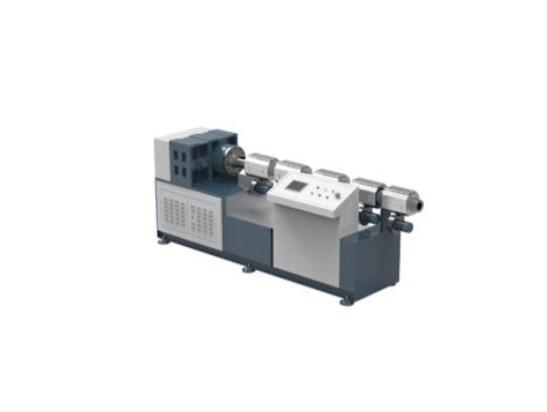Single screw extruder machine is the backbone of the plastics industry, providing a reliable and efficient means of converting raw materials into a wide range of products. These machines are designed to melt, mix, and shape plastic materials through a continuous extrusion process, making them indispensable in the manufacturing of plastic films, pipes, profiles, and more.
The heart of a single screw extruder machine is its screw, a long, helical component that rotates within a heated barrel. The screw's design is critical to the machine's performance, as it determines the rate at which the plastic material is melted and mixed. The screw's flight, pitch, and depth are carefully calculated to optimize the machine's output and the quality of the extruded product.
The process begins with the feeding of raw plastic material, typically in the form of pellets or granules, into the hopper of the extruder. From there, the material is gravity-fed onto the screw, which begins to transport the material forward. As the screw rotates, the material is subjected to heat from the barrel heaters and the mechanical energy from the screw's rotation, causing it to melt and become a viscous fluid.
The melting process is a critical step in the extrusion process, as it must be carefully controlled to ensure the material is uniformly melted and free of air bubbles or other impurities. The temperature profile along the barrel is carefully managed to achieve the desired melting characteristics. The use of a single screw allows for a more straightforward temperature control system compared to twin-screw extruders, which can be more complex due to the additional screw.
Once the material is melted, it is then mixed and homogenized by the action of the screw. The mixing process is essential for ensuring a consistent product with uniform properties throughout. The design of the screw's flight and the use of mixing elements can be tailored to the specific requirements of the material being processed, whether it be a simple polyethylene or a complex polymer blend.
As the melted material moves down the barrel, it is subjected to increasing pressure, which is necessary for the extrusion process. The pressure builds as the material is forced through a die, which shapes the material into the desired profile. The die is a critical component of the extrusion process, as it determines the final shape and dimensions of the extruded product.
After exiting the die, the extruded product is cooled and solidified, typically using a water bath or air cooling system. The cooling process is essential for setting the shape of the product and ensuring its dimensional stability. Once cooled, the product can be cut to the desired length, or it can be wound onto a spool for further processing.
The versatility of single screw extruder machines is one of their key advantages. They can be used to process a wide range of materials, from common plastics like polyethylene and polypropylene to more specialized materials like PVC, TPU, and PLA. This versatility makes them suitable for a wide range of applications, from the production of simple plastic bags to the manufacturing of complex automotive components.
In addition to their versatility, single screw extruder machines are known for their reliability and ease of operation. The simplicity of the single-screw design means that there are fewer moving parts to maintain, which can result in lower maintenance costs and less downtime. This makes them an attractive option for manufacturers looking for a cost-effective solution to their extrusion needs.
However, single screw extruder machines do have some limitations. They may not be as efficient at mixing complex materials as twin-screw extruders, and they may struggle with materials that are prone to degradation at high temperatures. Despite these limitations, single screw extruder machines remain a popular choice for many applications due to their balance of performance, reliability, and cost-effectiveness.
In conclusion, single screw extruder machines are a vital component of the plastics industry, offering a reliable and efficient means of converting raw materials into a wide range of products. Their versatility, ease of operation, and reliability make them an attractive option for manufacturers in a variety of industries. As the demand for plastic products continues to grow, the role of single screw extruder machines in the production process is likely to remain as important as ever.
